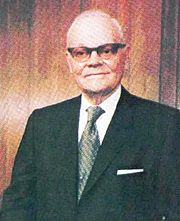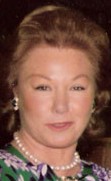Design
Design
Personality
Chart Properties
Your Cross represents the specific theme of your life. This cross embodies your unique potential & the lessons you're here to learn, providing a roadmap to fulfilling your life purpose.
We use the UTC birth time and date to do the calculations required to generate your Human Design chart.
Buy Tokens
Pay as you use, no expiry and no subscription required.Prompt Ideas
Get inspired with some epic prompt ideas.Allen Ginsberg's Biography
American writer and poet, the bearded bard of scatological colloquialisms who became the symbol of the anger under flower-power. Asked once to define his political and social views, Ginsberg said simply: “Absolute defiance.”
The son of a New Jersey schoolteacher and minor poet, Louis Ginsberg, he and his brother Eugene were taught to recite Dickinson, Poe, Shelley, Keats and Milton. Ginsberg credited his mother Naomi, a Russian-born Marxist who died in a mental institution in 1956, with instilling his “mad idealism.” Ginsberg entered Columbia University intending to become a left-wing lawyer. He became a protégé of two heavyweight literati, Lionel Trilling and Mark Van Doren. He then fell in with Jack Kerouac, William Burroughs, Neal Cassady and those who were out of the literary, cultural, political and sexual mainstream.
Ginsberg received a B.A. as a market consultant before dropping out of Columbia to join the Merchant Marines. He claimed to have had a mystical vision while masturbating in East Harlem in which he heard an angelic voice reciting William Blake’s “Songs of Experience.” After these mystical visions, he spent eight months in a mental institution in 1948. He later joined Ferlinghetti, Snyder and others in the “West Coast Poetry Renaissance” in the San Francisco Bay area.
He tried the straight life for a year, but after the blessing of his psychotherapist, he decided to quit his job, leave his girlfriend, get a room with Peter Orlovsky and devote himself to writing, smoking pot and doing whatever he wanted. His 1956 poem “Howl” made him notorious, deriving his visionary bardic stance from the Bible, Blake, Christopher Smart and Whitman with special effects as the courtesy of speed, LSD and laughing gas. Ginsberg is credited with creating the Beat Generation as well as coining the term, “flower power” in the 1960s. He dropped acid with Timothy Leary and with Bob Dylan. His poetry influenced the music of Bob Dylan, Yoko Ono and Patti Smith, the poetry of Czech President Vaclav Havel, and the in-your-face political antics of Abbie Hoffman and other radicals. He believed poetry should be spoken and his readings became standing-room only. Questioning his perceptions of the universe as an inhuman mystery, Ginsberg sought counsel with Martin Buber in Israel and holy men in India, returning with a new attitude of being in “contact with the now of life.” In 1972 he took Buddhist vows. Involved with many of the anti-war demonstrations of the late 1960s, Ginsberg was arrested at an anti-Vietnam war demonstration in New York City. During the 1968 Democratic National Convention in Chicago he was tear-gassed by police while trying to induce calm by chanting mantras.
Ginsberg won the 1973 National Book Award and was a runner-up for the Pulitzer Prize in 1995. Twice as long as “Howl,” his poem, “Kaddish” is a tribute to the life and death of his mother. Ginsberg’s books of prose include “Indian Journals,” 1970, “Allen Verbatim: Lectures on Poetry, Politics, Consciousness,” 1974 and “Journals: Early Fifties-Early Sixties,” 1977.
He refused to curtail his travel, lecture and performing schedule when his health started to fail, suffering from recurrent hepatitis and Bell’s palsy. Diagnosed with liver cancer, he was surrounded by a group of close friends and old lovers in his New York apartment when he died 4/05/1997, 5:01 PM EST.
Link to Wikipedia biography
Allen Ginsberg
Your Cross represents the specific theme of your life. This cross embodies your unique potential & the lessons you're here to learn, providing a roadmap to fulfilling your life purpose.
We use the UTC birth time and date to do the calculations required to generate your Human Design chart.







